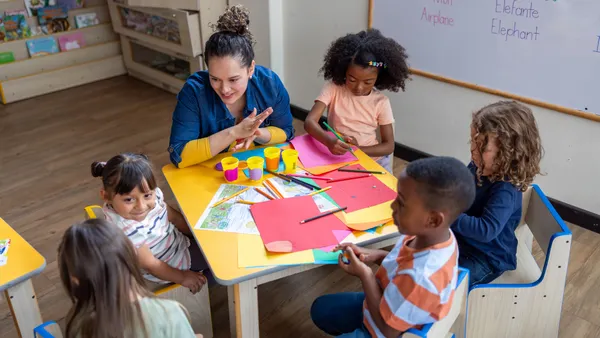Dive Brief:
- Teachers can help students learn self-regulation by integrating strategies to the classroom environment, special education teacher Nina Parrish wrote in an Edutopia article.
- Letting students know what’s expected of them is one place to start, but making sure children have the support they need is also crucial. That can include breaking lessons into more digestible chunks, making the classroom a positive environment and offering students time during class to reflect, so they can learn how to modify their reactions.
- Modeling behavior through role-playing activities can also help students learn and practice appropriate classroom behavior.
Dive Insight:
Self-regulation is a core competency all children need to learn. It’s hard to handle disappointments and be successful without managing emotions and behavior. And for students who have psychological and learning issues, or who have suffered from a traumatic life event, it's even harder to keep emotions in check. A lack of self-regulation can make it harder to get things done in the classroom, so it's crucial to teach students about it, Parrish wrote.
Students who are taught social and emotional learning (SEL) tools, including the ability to regulate their emotions, show a boost in their emotional and academic success, notes a 2017 study published in the International Journal of Child Care and Education Policy. The earlier students learn these skills, the more likely they develop into “…more self-confident, trusting, empathic, intellectually inquisitive, competent in using language to communicate, and better capable of relating well with others,” noted author Donna Housman.
Curriculum designers can turn to project-based learning programs to foster self-regulation. Learning how to negotiate steps and stay on track — the ability to self-manage — is of course core to PBL, along with social, emotional and academic success.
Making curriculums more "well-rounded" by incorporating ideas like SEL is happening in districts across the country, but states still weren't rushing to hold schools accountable for teaching students skills like self-regulation. Many still use data their education departments already have, like attendance rates or school climate surveys, in accountability plans for the Every Student Succeeds Act (ESSA). But by making self-regulation and other nonacademic measures part of the curriculum, and enforcing this idea at a state or federal level, students will be more equipped for success.








